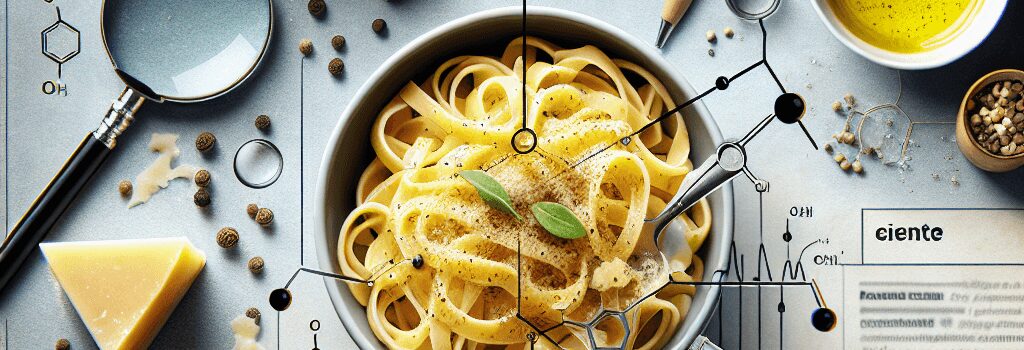The Science of Perfect Cacio e Pepe Sauce

Understanding the Classic Recipe
Cacio e pepe is deceptively simple: tonnarelli, Pecorino Romano, freshly cracked black pepper, and water. Yet its apparent ease masks a complex interplay of physics and chemistry. Chefs struggle to maintain a stable emulsion of cheese proteins and starch granules without ending up with a stringy, clumped mess. Recent work in Physics of Fluids demonstrates that precise dosing of starch, rather than relying on variable pasta water, is key to reproducible, velvety sauce.
Experimental Insights from Physics of Fluids
G. Bartolucci et al. (2025) designed a series of lab‐style experiments using common kitchen tools—rheometers to measure viscosity, optical microscopes to study microstructure, and thermal probes for temperature control. They mapped a phase diagram showing three regimes:
- Phase Separation (clumping) at starch <2% by cheese weight
- Optimal Emulsion at 2–3% starch
- Over‐gelation & stiffening at starch >3%
They recommend dissolving 4 g of corn or potato starch in 40 g of water, gently heating to 65–70 °C until gelatinization, then whisking into grated cheese off‐heat. Toasting pepper in a dry pan for 30 s enhances volatiles and avoids bitterness.
Molecular Mechanisms of Starch Gelatinization and Emulsion Stability
At around 60 °C, starch granules swell and amylose chains leach out, forming a three‐dimensional network. FTIR (Fourier‐transform infrared spectroscopy) reveals hydrogen bonds between gelatinized starch and casein micelles in Pecorino, inhibiting protein aggregation. Small‐angle X-ray scattering (SAXS) confirms that the network traps fat droplets, yielding a shear‐thinning fluid with a target viscosity of 1,500–2,000 mPa·s—ideal for coating pasta strands.
Alternative Stabilizers and Advanced Emulsification Techniques
Industry uses of trisodium citrate (2–3%) mimic the starch role by raising pH and charging casein micelles for electrostatic stabilization. Mayo Clinic flavor scientist Dr. Elena Rossi notes that citrate delivers a slightly muted cheese flavor but offers a flatter viscosity curve across 50–80 °C. Other chefs explore sodium alginate and lecithin blends, guided by computational fluid dynamics (CFD) simulations that recommend mixing at shear rates of 500–1,000 s⁻¹ to maintain uniform droplet sizes (~5 μm).
AI and Automation in Culinary Emulsions
Startups like SauceSense have raised $5 M seed funding to integrate AI and IoT into professional kitchens. Their smart cookers use embedded cameras and neural networks to analyze sauce texture in real time and adjust induction power. Early trials report a 20% reduction in batch variability, measured by inline viscometers and Raman spectroscopy probes. Meanwhile, MIT’s Food Computing Lab is training models on a 10,000-recipe dataset to predict optimal starch blends based on humidity, cheese moisture, and altitude.
Future Directions: From Gricia to Smart Kitchens
Di Terlizzi and colleagues plan to extend their methods to pasta alla gricia, where rendered guanciale fat introduces additional emulsification challenges. They are collaborating with the Max Planck Institute for Polymer Research to study lipid‐protein‐starch ternary systems using dynamic light scattering (DLS). Concurrently, commercial induction ranges with embedded thermal imaging and closed-loop PID control promise precise maintenance of the 65 °C plateau crucial for sauce stability.
Conclusions
By combining classical fluid mechanics, molecular gastronomy, and AI‐driven instrumentation, cooks can now achieve perfect cacio e pepe with laboratory‐grade precision. This fusion of food science and technology not only demystifies an Italian classic but also paves the way for smarter, data-driven kitchens worldwide.